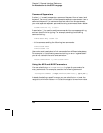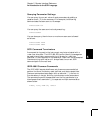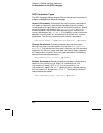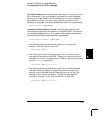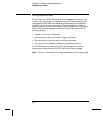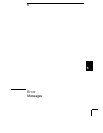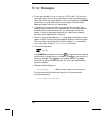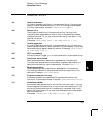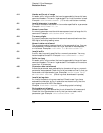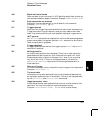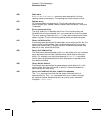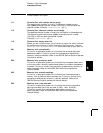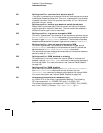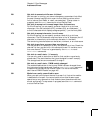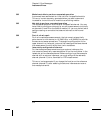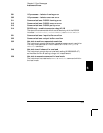
-114 Header suffix out of range
A header suffix is the number that can be appended to the end of some
command headers. This error is generated if an invalid number is used.
Example: OUTP:ALARM5:SOURCE (“5” is not a valid alarm number)
-121 Invalid character in number
An invalid character was found in the number specified for a parameter.
Example: TRIG:TIMER 12..34
-123 Numeric overflow
A numeric parameter was found whose exponent was too large for this
command. Example: CALC:SCALE:GAIN 1E34000
-124 Too many digits
A numeric parameter was found whose mantissa contained more than
255 digits, excluding leading zeros.
-128 Numeric data not allowed
The wrong parameter type was found in the command string. You may
have specified a number where a string or expression was expected,
or vice versa. Examples: DISP:TEXT 5.0 or ROUT:CLOSE 101
-131 Invalid suffix
A suffix was incorrectly specified for a numeric parameter. You may
have misspelled the suffix. Example: ROUT:CHAN:DELAY 5 SECS
-134 Suffix too long
A header suffix is the number that can be appended to the end of some
command headers. This error is generated if the header suffix contains
more than 12 characters.
-148 Character data not allowed
A discrete parameter was received but a character string or a numeric
parameter was expected. Check the list of parameters to verify that you
have used a valid parameter type. Examples: ROUTE:CLOSE CH101
or DISP:TEXT TESTING (the string must be enclosed in quotes)
-151 Invalid string data
An invalid character string was received. Check to see if you have
enclosed the character string in quotation marks and verify that the
string contains valid
ASCII characters.
Example: DISP:TEXT ’TESTING (the ending quote is missing)
-158 String data not allowed
A character string was received but is not allowed for this command.
Check the list of parameters to verify that you have used a valid
parameter type. Example: CALC:SCALE:STATE ’ON’
Chapter 6 Error Messages
Execution Errors
306



